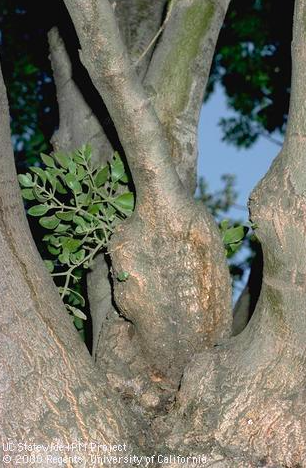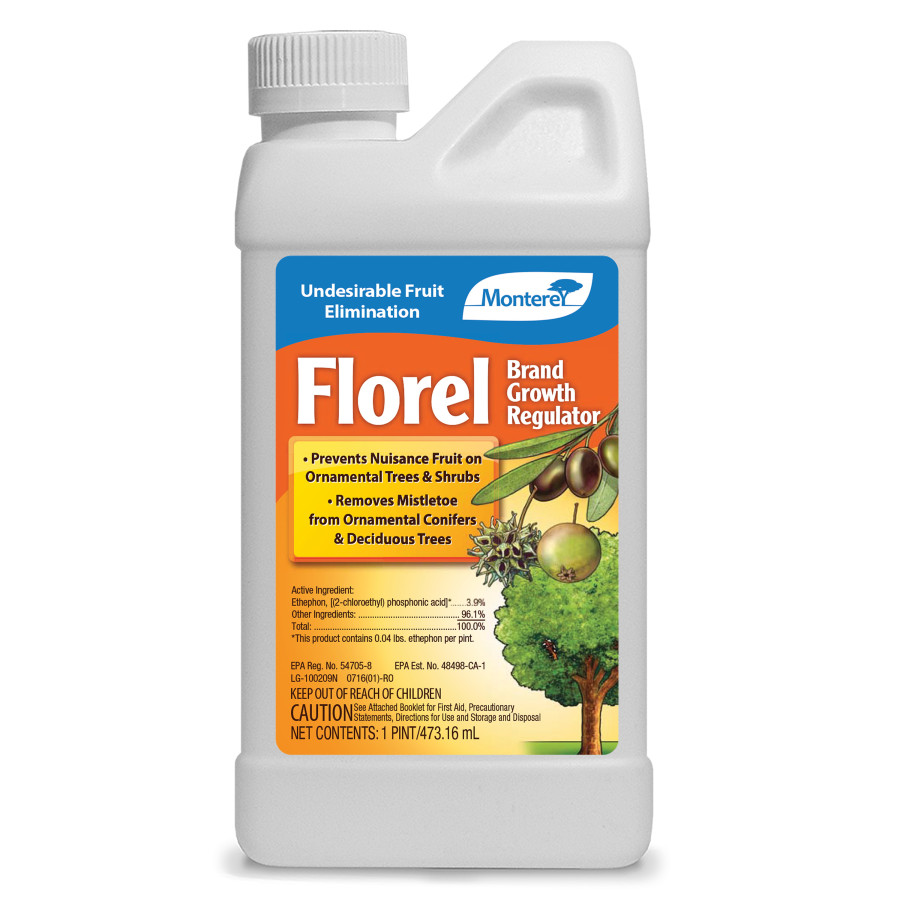Mistletoes are parasitic plants that can cause damage to shrubs and trees in California. Mistletoes are hemiparasitic, meaning they can photosynthesize on their own but use a host (your trees and shrubs) for nutrients and water.
Identification
One of the easiest ways to see Mistletoe in your plants is in winter when the female plants are in fruit. The berries attract birds such as cedar waxwings, robins, and other species. Birds will feed on the berries and then fly around and defecate the berries onto other trees. The seeds eventually sprout and grow under the bark of your tree. This is why Mistletoe can start so high up in your tree.
Unsightly Damage
In winter, you may notice the green foliage of the Mistletoe in your deciduous tree after it has dropped all of its leaves. An infested branch may have a large swollen branch at the attachment point of the Mistletoe (see picture). It may also cause your tree to grow slower, or branches may die off at the point of attachment. During heavy infestations, your tree may die, have stunted growth, or become susceptible to other diseases because it becomes weaker.
Management
Our best recommendation for treating Mistletoe is Monterey’s Florel. It is a plant growth regulator with the active ingredient ethepon. Spray Florel only on the Mistletoe foliage when the tree is dormant and before new leaves emerge (and you can better see the Mistletoe). If you have more questions on the treatment of Mistletoe, please come to the nursery to talk with our expert staff about how to apply it.
You can learn more about Managing Mistletoe on the UCIPM website.



